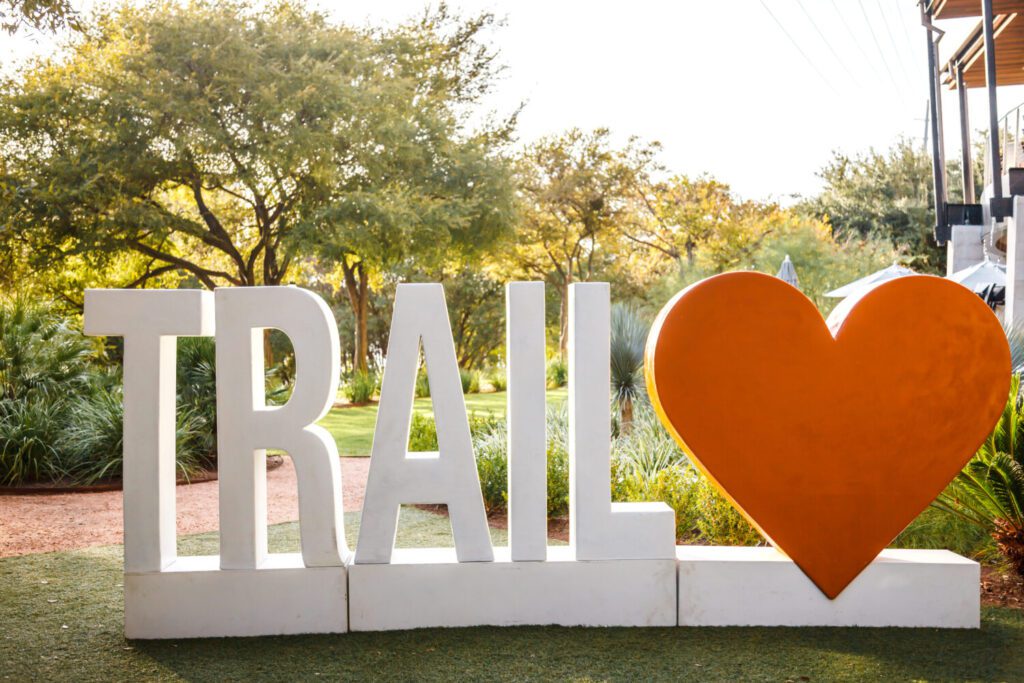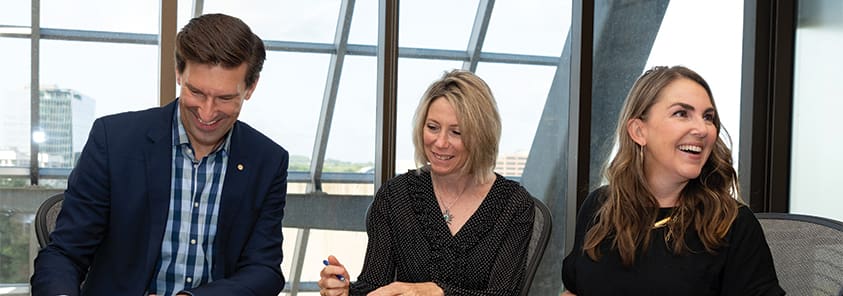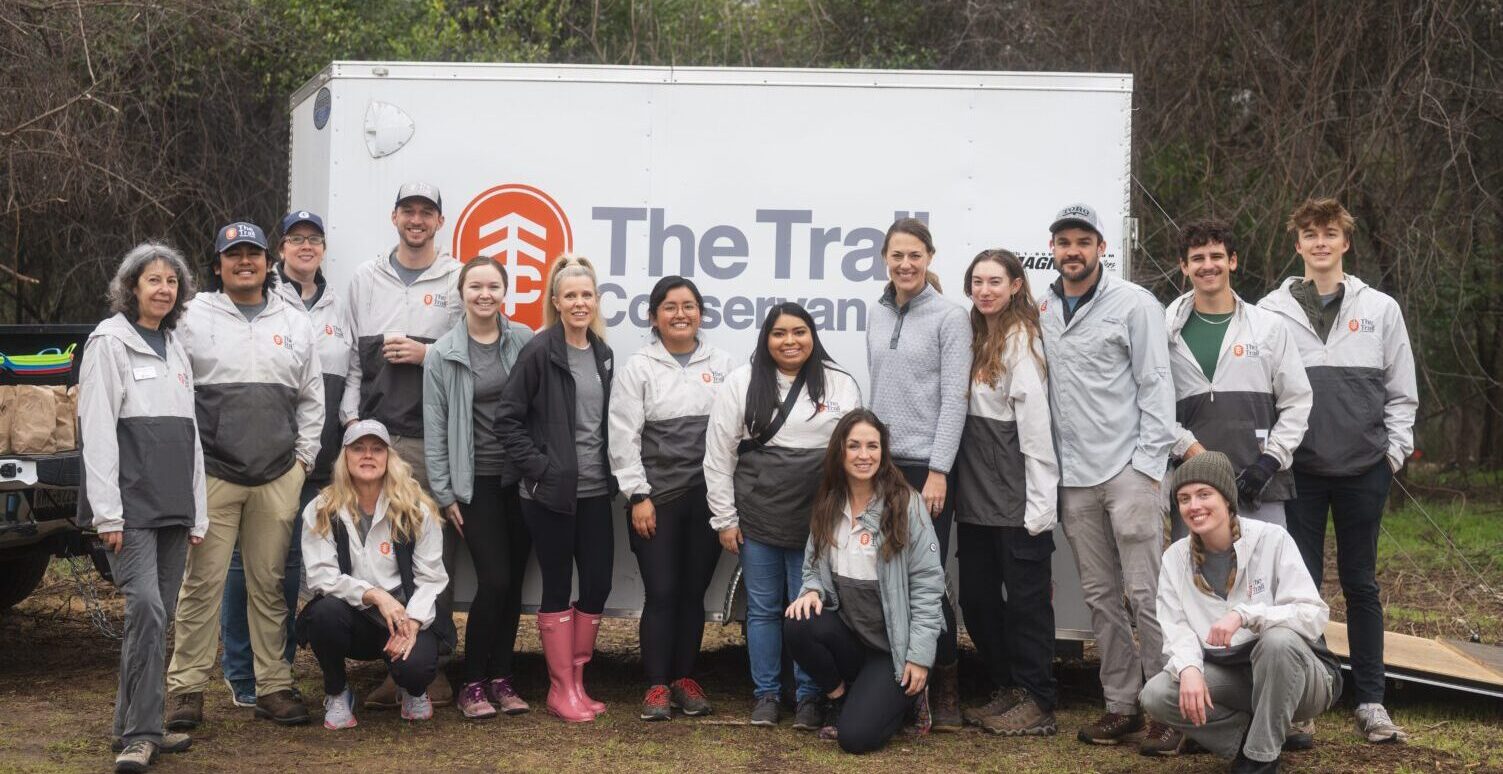Strategic Plan


the strategic plan
The 10-mile-long Ann and Roy Butler Hike-and-Bike Trail, along with Lady Bird Lake that it surrounds, is located in the center of Austin, Texas, which is one of the fastest-growing cities in the country.
about the plan
In a city of more than one million, known for its active outdoor life, the popular and heavily used trail has more than four million visits a year. The Trail and lake are considered by many to be the Austin’s most beloved and restorative natural amenities — sources of beauty, pride, history, and health. They are iconic treasures that define Austin’s quality of life for residents and visitors alike.
The Butler Trail was established in the 1970s. Since then, the City of Austin’s Parks and Recreation Department (CoA PARD) has exercised responsibility for operating and maintaining the Trail. In 2003, The Trail Conservancy (TTC, previously the Town Lake Trail Foundation), a 501(c)(3) was formed to enhance the Trail. Since that time, TTC has invested more than $13 million in various improvements to this public asset, most notably the Boardwalk on the south side of the lake.
In 2018, TTC announced plans for 15 additional projects, ranging from restrooms at Festival Beach to the redevelopment at Drake Bridge. In 2019, TTC entered into discussions with the City’s PARD and Watershed Protection Department (WPD) about expanding its role beyond project development to encompass some aspects of maintenance and operations and activation. Toward that end, in 2019 TTC engaged both the Urban Land Institute (ULI) and ETM Associates to consider its vast potential for the future.
In early 2020, TTC committed to the development of this three to four-year Strategic Plan. The plan incorporates input from various consultants, TTC’s board and staff, and representatives of the City of Austin. TTC then developed a Management Plan to implement the priorities articulated herein and published outcomes in their annual reports.
2024 Request for Proposal
The Trail Conservancy (TTC) is initiating a Request for Proposal (RFP) on 10/1/2024 to identify a qualified consultant to guide and execute a comprehensive strategic planning and visioning process that includes a communications strategy, for the next 3-5 years. TTC seeks a consultant who has demonstrated experience in successfully developing strategic plans, has excellent facilitation skills, has proven experience with non-profit strategic planning, and a strong understanding of the structure and purpose of trusted partnerships, community connectivity, building awareness, and funding for future growth.
Timeline:
- Final date for questions related to the RFP submitted by: October 15, 2024, 5:00 pm CST (answers to be posted on this page October 18)
- RFP submittal date: October 25, 2024, 5:00 pm CST
- Interviews for selected candidates: November 4-7, 2024
- Final selection: November 19, 2024
2024/2025 Strategic Plan RFP Clarification Q & A:
The 2020 process had a unique focus as TTC prepared to enter the Park Operations and Maintenance Agreement with the City, so a pivot into a conservancy model. As such, much of the strategic plan foundation was focused on the partnership with the City and growing TTC’s organizational capacity across all departments (park operations capacity, communication, fundraising) to prepare for the shift in our impact model. That being said, many of the strategic priorities and outcomes still ring true, but could be improved upon based on our current trajectory. We will likely build a more robust page on the website for reporting out the strategic plan progress once this plan is finalized and we have internally built the accompanying management plan.
The staff was relatively small during the last planning process (5 people vs 20 now). We hope to have the executive leadership team deeply involved, have an opportunity for all staff to engage and have full input from both the TTC Board and Advisory Council (AC). We have a strong relationship between these groups as our annual planning retreat is always inclusive of staff, Board, and AC.
As is appropriate with strategic plans that are developed for organizations that serve the public, PARD and other City Departments should be significant stakeholders in the process as part of the pre-plan work. The change in responsibilities over the next 6 years will be incremental, deliberate increases in operations and maintenance with sufficient capacity building opportunities. The intent is to grow capacity alongside (ideally in advance of) these increasing responsibilities and costs and to learn from our City partners in advance of each new role that we take on.
TTC plans to facilitate stakeholder introductions, but hope that the consultant is the lead for those conversations so that they can feel candid to share their feedback and hopes for TTC’s future.
We spent approximately $30k for our previous plan and have allocated that plus a minor contingency in our budget for next year.
We don’t have an exact number for focus groups, but would like to include an opportunity to get contributions from at a minimum the following stakeholders:
- TTC Staff
- TTC Board
- City of Austin partners
- Community leaders
- Major donors
- TTC committee members
- TTC Advisory Council members
We are entirely open to a different approach for getting feedback from our stakeholders and do expect it to be a combination of different methods.
We created a management plan tracking system for the current strategic outcomes – each of the outcomes have high level goals and activities that have their own metrics that staff has set and which are reported out to the Board as appropriate. We hope that the new strategic plan will have a more high level way to evaluate progress.
It has been assembled and includes executive staff, Board members, Governance Committee members, and a Finance Committee member.
This refers to the rollout of the new strategic plan.
Location: 1920 E Riverside Drive, Suite A-120 PMB 223 Austin, TX 78741
Phone: 1-855-44-TRAIL
Newsletter
The Trail Conservancy is a non-profit, tax-exempt charitable organization under Section 501(c)(3) of the Internal Revenue Code. Tax ID: 87-0699956.


